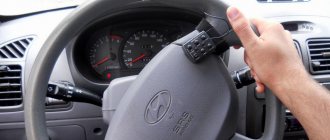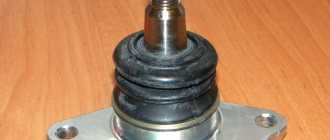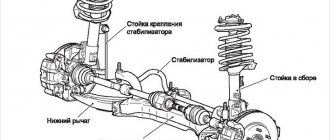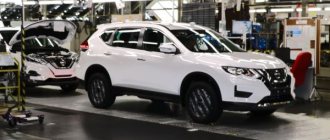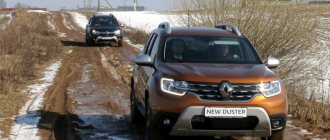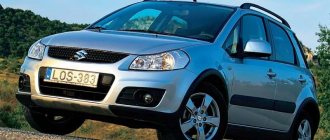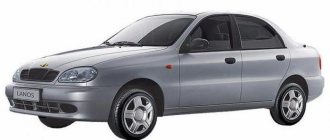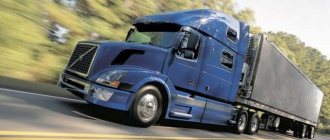Engine
The 316i E30 was equipped with a direct injection power unit with a standard catalyst for the German market - M40B16 with a displacement of 1596 cc.
For South Africa and some other markets, this model was equipped with a 1.8-liter M10B18 engine.
| BMW 316i | Audi 80 1.8 B3 | Mercedes-Benz 190E 1.8 W201 | Opel Vectra 2.0 (A) | VW Jetta 1.8 II | |
| Working volume, cm³ | 1596 | 1781 | 1797 | 1988 | 1781 |
| Power hp/rpm | 102/5800 | 90/5500 | 109/5500 | 100/5200 | 105/5400 |
| Torque, Nm/rpm | 140/4500 | 142/3300 | 150/3700 | 158/2600 | 155/3800 |
Restyling BMW E30, 1987
BMW E30 cars underwent changes that year.
- The bumpers were trimmed with chrome and painted black. Then they began to choose paint identical to the bodies so that everything would look in the same style.
- The taillights have increased in size.
- All steering wheels in car models, with the exception of 316, were equipped with hydraulic boosters. We installed soft accelerator pedals.
Stylish touring cars and new passenger cars appeared. They are also called station wagons.
The 318i cars were equipped with four-cylinder M40 1.8 liter engines.
Equipment appeared:
- in the form of belt drives for camshafts;
- hydraulic compensators;
- electronic fuel injection systems;
- new ignition control mechanisms.
Motors with low power of 115 hp. But the cars did not delight users. Because the design characteristics did not at all correspond to the reliability properties. Every 40 thousand km it was necessary to change the belts and three rollers. Also, the drive gears wore out quickly.
The 318i model cars were renamed 316i and were still produced until about 1988.
320i cars have Bosch engine control systems. The 320i and 325i have larger fuel tanks. And salons began to be decorated in a new style.
Dynamics
| BMW 316 | Audi 80 | Mercedes 190 | Opel Vectra | Volkswagen Jetta | |
| Maximum speed, km/h | 182 | 182 | 185 | – | 184 |
| Acceleration time 0 – 100 km/h, seconds | 12,1 | 12,4 | 12,7 | – | 10,6 |
| Fuel consumption, liters per 100 km, (manual transmission) | |||||
| Mixed cycle | 8,6 | 7,6 | 8,9 | – | 8,7 |
| Urban cycle | – | 9,3 | 11,0 | – | 10,7 |
| Country cycle | – | 6,4 | 7,0 | – | 6,6 |
BMW 325. Official fuel consumption per 100 km.
Generation 3 (E36, 1990-2000)
- 325td, 116 l. With.
- 325tds, 143 l. With.
Generation 4 (E46, 1998-2006)
- 325i, 170 l. With.
- 325i, 192 hp With.
- 325Xi, 192 HP With.
Generation 5 (E90-E93, 2005-2013)
- 325i/Xi, 218 l. With.
Generation 6 (F30, F31, F34, since 2011)
- 325d, 224 l. With.
Characteristics of the BMW 3 Series E90 (options)
Share of BMW 3 Series with corresponding function (optional)
Quality BMW 3 Series
According to the annual reports of the German Technical Inspectorate for Motor Vehicles (TÜV), the quality of the BMW 3 Series is above average. During regular checks, faults are detected in approximately 13.4% of BMW 3 Series vehicles.
| Year of inspection | Vehicle age | % of failures detected / average for vehicles of the same age | Place in the ranking |
| BMW 3 Series 2008 | |||
| 2017 | 9 years | 19.4% / 20.90% | 41. out of 106 |
| 2016 | 8 years | 16.9% / 19.10% | 41. out of 116 |
| 2015 | 7 years | 17.4% / 20.10% | 39. out of 111 |
| 2014 | 6 years | 13.0% / 14.80% | 39. out of 122 |
| 2013 | 5 years | 8.0% / 10.80% | 29. out of 121 |
| 2012 | 4 years | 5.0% / 5.90% | 44. out of 129 |
| 2011 | 3 years | 4.7% / 5.50% | 47. out of 132 |
| 2010 | 2 years | 3.8% / 5.10% | 26. of 131 |
| BMW 3 Series 2007 | |||
| 2017 | 10 years | 19.4% / 20.90% | 41. out of 106 |
| 2016 | 9 years | 23.3% / 24.90% | 42. out of 102 |
| 2015 | 8 years | 17.4% / 20.10% | 39. out of 111 |
| 2014 | 7 years | 18.8% / 21.80% | 42. out of 113 |
| 2013 | 6 years | 8.0% / 10.80% | 29. out of 121 |
| 2012 | 5 years | 7.9% / 10.30% | 33. out of 122 |
| 2011 | 4 years | 4.7% / 5.50% | 47. out of 132 |
| 2010 | 3 years | 3.8% / 5.10% | 26. of 131 |
| 2009 | 2 years | 3.2% / 5.00% | 16. of 117 |
| BMW 3 Series 2006 | |||
| 2017 | 11 years | 32.9% / 27.10% | 74. from 86 |
| 2016 | 10 years | 23.3% / 24.90% | 42. out of 102 |
| 2015 | 9 years | 23.9% / 26.80% | 31. out of 95 |
| 2014 | 8 years | 18.8% / 21.80% | 42. out of 113 |
| 2013 | 7 years | 11.8% / 17.20% | 22. out of 107 |
| 2012 | 6 years | 7.9% / 10.30% | 33. out of 122 |
| 2011 | 5 years | 5.5% / 10.40% | 10. from 120 |
| 2010 | 4 years | 3.8% / 5.10% | 26. of 131 |
| 2009 | 3 years | 3.2% / 5.00% | 16. of 117 |
| 2008 | 2 years | 4.6% / 4.80% | 55. out of 116 |
| BMW 3 Series 2005 | |||
| 2017 | 12 years | 32.9% / 27.10% | 74. from 86 |
| 2016 | 11 years | 35.9% / 31.40% | 70. from 89 |
| 2015 | 10 years | 23.9% / 26.80% | 31. out of 95 |
| 2014 | 9 years | 31.1% / 28.80% | 62. out of 95 |
| 2013 | 8 years | 11.8% / 17.20% | 22. out of 107 |
| 2012 | 7 years | 17.4% / 17.50% | 55. out of 107 |
| 2011 | 6 years | 5.5% / 10.40% | 10. from 120 |
| 2010 | 5 years | 9.5% / 9.90% | 58. out of 123 |
| 2009 | 4 years | 3.2% / 5.00% | 16. of 117 |
| 2008 | 3 years | 4.6% / 4.80% | 55. out of 116 |
| 2007 | 2 years | 7.0% / 5.90% | 77. out of 113 |
Dimensions
| BMW | Audi | MB | Opel | FV | |
| dimensions in mm/volume in liters/weight in kg | |||||
| Length | 4321 | 4390 | 4450 | 4432 | 4385 |
| Width | 1641 | 1700 | 1689 | 1706 | 1675 |
| Height | 1379 | 1400 | 1379 | 1400 | 1415 |
| Wheelbase | 2570 | 2550 | 2659 | 2600 | 2475 |
| Front wheel track | 1410 | 1410 | 1440 | 1437 | 1425 |
| Rear wheel track | 1420 | 1430 | 1420 | 1432 | 1420 |
| Ground clearance | 125 | 130 | 163 | 140 | 130 |
| Trunk volume | 425 | 453 | 411 | 530 | 600 |
| Maximum trunk volume | – | – | – | 840 | – |
| Curb weight | 1085 | 1025 | 1140 | – | 930 |
| Full mass | 1545 | 1490 | 1640 | – | 1450 |
Over the entire production period, a total of 211,497 sedans and coupes, and 20,595 station wagons were produced.
The price at the time of production of the sedan/coupe is from 25,500 marks, the station wagon version is 32,500 marks.
The 316i E30 was replaced by the BMW 316i E36.
AutoGourmand
BMW E30
- a compact car from BMW and was the second model of the “third series”, replacing the BMW E21 on the production line and was replaced by the BMW E36 in 1993. E30 convertibles continued to be produced until 1993, station wagons until 1994.
The BMW M3 was first introduced on the E30 platform. An extended version of the front suspension and chassis from the E30 325i were used in the BMW Z1 Roadster.
The E30 3 Series was produced in six body types: 4-door sedan, 2-door sedan (often confused with “coupe”), 5-door station wagon (according to BMW classification - “touring”) and convertible. A Baur convertible was also available. The all-wheel drive 325ix was produced from 1988 to 1991. The all-wheel drive version was available in sedan and touring versions. The E30 version of the BMW M3 was very different from the basic E30 models. The M3 E30 was based on a 2-door sedan.
The body of the M3 E30 is wider and longer than the basic version. Later versions of the M3 E30 were also produced in convertible and coupe versions.
The M3 uses very few parts from other E30 models, however many M3 parts can be used on other body styles and are interchangeable offering the consumer an OEM "upgrade".
These parts are control arms, control arm bushings, steering racks, etc.
The cars were equipped with a range of inline 4-cylinder (BMW M10, M40 BMW, and BMW M42) and inline 6-cylinder (BMW M20 and M21 BMW) engines, both petrol and diesel.
Torque for engines ranges from 140 N⋅m (100 lb⋅ft) for the 1.8 L (1,766 cc) 4 cylinder engine, to 230 N⋅m (170 lb⋅ft) for the 2.7 L (2,693 cc) .cm) 6-cylinder petrol engine.
The E30 BMW M3 was equipped with a high-revving 4-cylinder engine (BMW S14), producing 175 kW (238 PS, 238 hp) in its final version for the European market.
In 1983 in Germany, the price for a BMW 316 in a 2-door body was 20,700 DM, and in 1986 the same car already cost 22,550 DM.
The trunk volume of the sedan is 425 liters, while for the station wagon it varies from 370 to 1125 liters. Load capacity is 500 kg.
Archive photos:
1988 BMW 325ix E30 Touring All Wheel Drive
Mileage – 414,000 km
3rd owner
We bring to your attention a rare, all-wheel drive touring 325iX. Fewer of these were produced than the M3 in the E30 body.
ATTENTION: I’m not in any hurry to sell and the price tag is hardly negotiable, so with offers “I’ll take it for 300”, as well as those who like to find out the “last price” by phone - don’t call, I’ll swear. No sales assistance needed either.
The car is in good condition externally and technically. The spare parts that were installed on it were only new original ones, right down to the nameplates. Beautiful Borbet A wheels with new Bridgestone Turanza summer tires are installed. There is no winter and there never was, because... The car spends the winter in a warm box. Among the shortcomings - the front seats require restoration - I didn’t want to change them anyhow, but I didn’t want to find a workshop where they would change them “like from the factory” until I got around to it - every year I brought to mind its technical condition and exterior.
Below is the VIN decoding:
Color ZINNOBERROT (138) Upholstery (0273) Date of manufacture 1988-11-18
S240A Steering wheel with airbag, leather S288A L/s wheel style 29 S314A Outside mirror/driver's door lock with heated S401A Electric sunroof S411A Electric window regulator drive front. / Building S413A Trunk dividing net S423A Velours foot mats S428A Warning triangle and first aid kit S481A Sports seat S498A Headrests in the rear with mechan. S500A Headlight washer system/intensive cleaning S530A Air conditioning S535 ELEKTRONISCHETEMPERATURREG. S540A Cruise control system S551A On-board computer II with remote control S650A Bavaria C, radio (alas, now an Alpine) S675A Audio system S681A Roof antenna S690A Cassette holder
Price: 450,000
auto.ru
In contact with
BMW M1 and BMW M5
The first of M-Power: BMW M1 and BMW M535i
View This particular car is an exhibit of a private collection, and has already been the subject of some articles in magazines dedicated to cars. The car was originally developed to compete in the Group One racing series. But he was not destined to become a participant in this racing series, as it was canceled in 1985, just in the year that sales of the BMW 333i started; remember, something similar happened with the BMW M1. The concept was developed with the idea of installing one of BMW's largest engines at the time into a small, lightweight chassis. The engine was used from the seventh series BMW E23 733i, which had the following characteristics: 3.2 liters of volume, 6 cylinders in line, 12 valves, power 194 hp and 285 torque. The development of the 333i was shared between BMW SA, BMW Motorsport and Alpina. Just as the BMW E23 745i was a unique car in South Africa, the BMW 333i was subjected to an extensive testing program to ensure optimal engine cooling conditions, optimum gear and final drive ratios, and low engine noise levels. Alpina played a major role in the development, they provided the intake and exhaust manifolds, receiver, and copper radiator specially designed for this model. The Bosch L-Jetronic engine management system was modified, as a result of which it was possible to change the torque curve, increasing power in the lower rev range. Alpina also developed a braking system: 296mm brake discs at the front. The suspension was replaced with Bilstein products with stiffer springs. 16 inch Alpina wheels were installed. The transmission was a Getrag gearbox with closely spaced gears, which transmitted all the engine power to the rear wheels through a ZF gearbox with 25% locking. The interior features a distinctive feature of Alpina cars - a digital indicator on the air duct panel, which displays the temperature of the engine oil and rear differential, oil pressure and the degree of vacuum in the intake manifold. The speedometer is lined up to 270 km per hour. The interior is complemented by BMW Motorsport leather seats, a sports 3-spoke steering wheel, and a gear knob with the M logo. The body kit from the M-technik I kit gave the BMW E30 333i a swift appearance and added aerodynamics. Owners had the choice of either getting air conditioning or power steering, unfortunately there was not enough space under the hood to install both systems. It is easy to distinguish these models from each other: on models with air conditioning there are no front fog lights, instead of which there are holes for additional air access to the air conditioning unit. Also, fans of BMW South Africa got used to the idea that their icon: the BMW M3 was dealt a blow, as it was only available in a left-hand drive version, which was not acceptable for South Africa. This did not mean that motorsport would cease to exist for BMW; on the contrary, BMW CA understood that in order to remain competitive, they needed to develop, creating new cars for racing. So we smoothly move on to the next mythical car...

